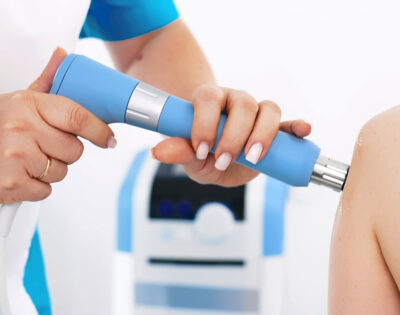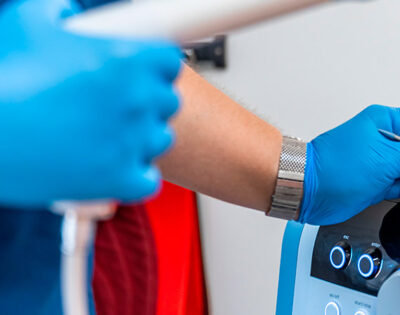Extracorporeal Shockwave Therapy (ESWT) is a non-invasive treatment that uses high-energy acoustic waves to promote healing in soft tissues and bones affected by chronic pain and injuries. Since its introduction in the 1980s, ESWT has become a crucial treatment option for conditions such as plantar fasciitis, tendinopathy, and musculoskeletal disorders.
Healthcare professionals looking to invest in an ESWT device must decide between clinical devices (high-power, stationary units) and portable devices (lightweight, mobile solutions). Each option has unique advantages that impact treatment effectiveness, cost, and practice efficiency.
Key Differences Between Portable and Clinical ESWT Devices
| Feature | Portable ESWT Devices | Clinical ESWT Devices |
| Size & Mobility | Compact, lightweight, easy to transport | Larger, stationary unit requiring dedicated space |
| Power & Depth | Lower intensity, suitable for superficial treatments | Higher energy output, deeper penetration (up to 10-12cm) |
| Technology Type | Primarily radial shockwave therapy (R-ESWT) | Includes both radial and focused shockwave therapy (F-ESWT) |
| Cost | Lower initial investment | Higher cost, advanced capabilities |
| Ideal Use | Home visits, mobile clinics, basic treatments | High-volume practices, advanced treatments, deep tissue therapy |
Clinical vs. Portable: Which One Suits Your Needs?
When selecting an ESWT device, it is crucial to match the equipment to your specific needs. Each type offers distinct advantages and limitations directly impacting treatment efficacy and practice workflow.
Portable ESWT Devices
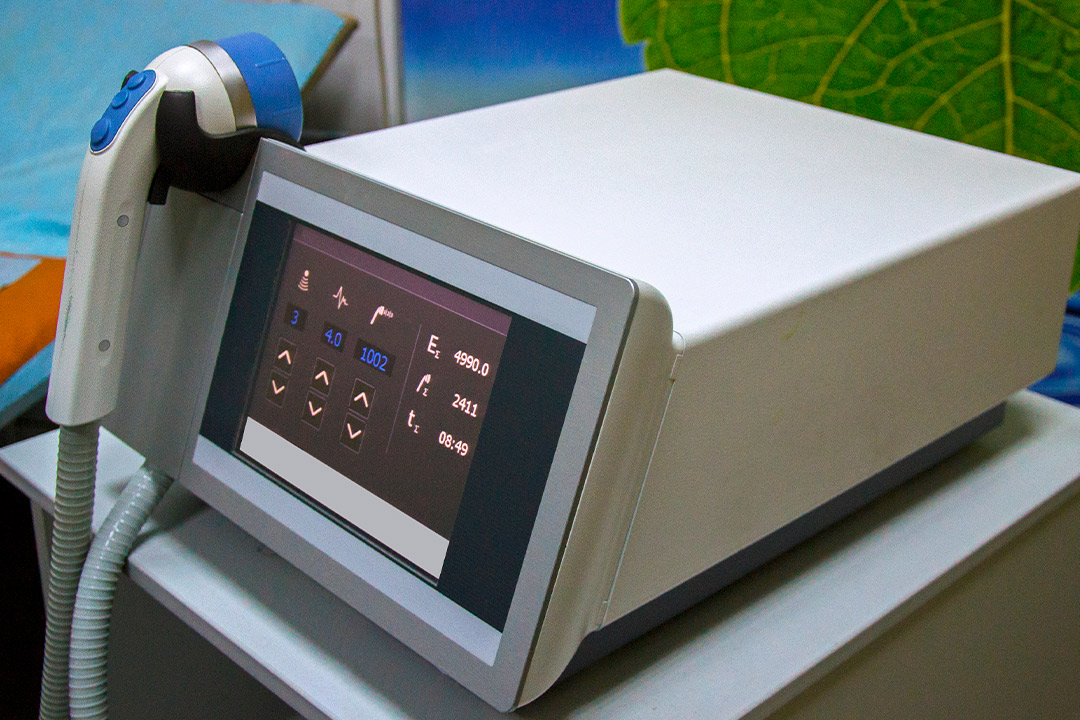
- Ideal for mobile services and small clinics with limited space.
- Radial shockwaves typically spread energy over a larger surface area and are best for superficial conditions like tendonitis and plantar fasciitis.
- More affordable but less powerful than clinical models.
Practice Needs and Assessing Treatment Flexibility
Treatment flexibility is a critical factor when selecting an ESWT device. The ability to adjust depth penetration, energy levels, and frequency settings directly impacts treatment efficacy for different conditions and patient sensitivities. An ideal device should offer versatile energy ranges and multiple applicators to accommodate various body areas and treatment protocols.
When evaluating practice needs, consider your specific requirements:
Assessing Your Treatment Needs
When choosing between a portable and clinical ESWT device, consider:
Patient Volume & Clinic Size
- High-volume practices benefit from clinical devices with advanced settings.
- Low-volume mobile practitioners may find a portable unit more practical.
Types of Conditions Treated
- Superficial conditions (e.g., plantar fasciitis, tennis elbow) → Portable devices work well.
- Deep tissue conditions (e.g., calcific tendonitis, myofascial pain) → Clinical devices are more effective.
Space & Mobility
- Limited space or mobile practice? → Portable device.
- Dedicated clinic space? → Clinical device for advanced treatments.
Technology Features
- Clinical machines offer adjustable frequency, depth penetration, and multiple applicators.
- Portable devices provide essential shockwave therapy at a lower cost.
Financial Considerations: Beyond the Price Tag
While the upfront cost is a key factor, long-term investment considerations are equally important:
| Cost Factor | Portable Devices | Clinical Devices |
| Initial Investment | Lower cost (~$3,000–$8,000) | Higher cost (~$15,000–$40,000) |
| Consumables | Minimal replacements | Regular component maintenance (e.g., projectiles, guiding tubes) |
| Annual Service Costs | Low or none | Higher, includes device & handpiece servicing |
| Shockwave Guarantee | Typically, lower shockwave count | Higher durability & shockwave count |
ROI Considerations
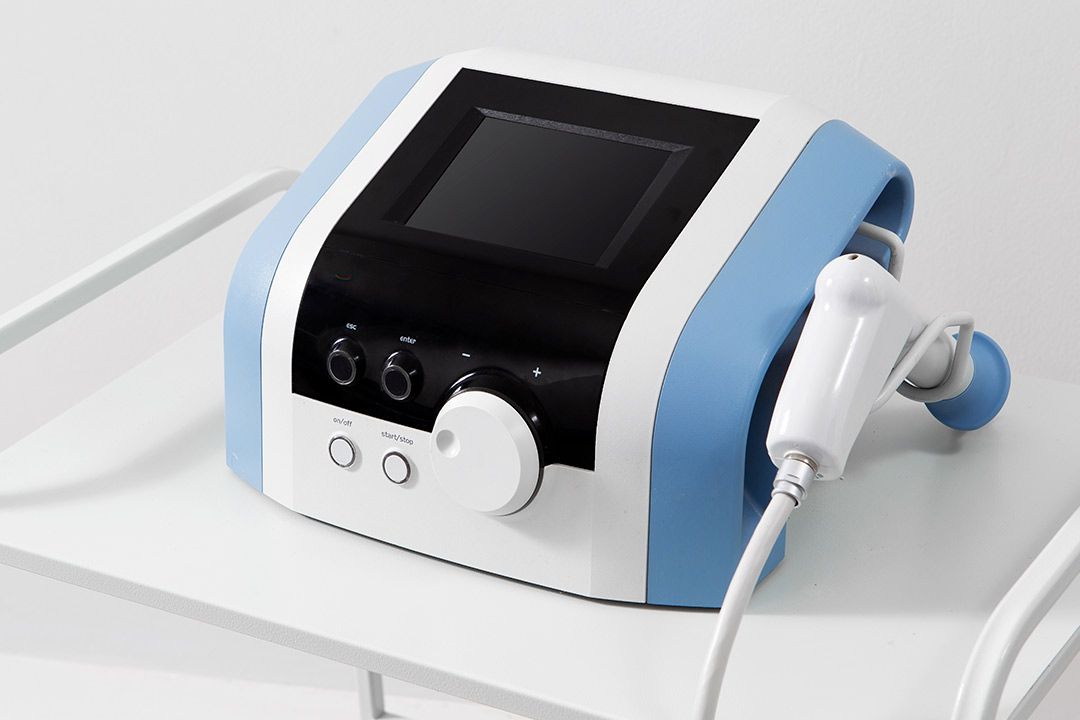
Investing in an ESWT device represents a significant financial commitment that requires careful consideration beyond the initial price tag. While upfront costs are essential, the value lies in selecting a device that delivers superior performance, durability, and optimal patient outcomes. Many practitioners find that paying more initially for quality technology yields better long-term returns through improved treatment efficacy and practice reputation.
-
- Portable Devices → Faster return on investment due to lower cost but may lack long-term durability.
- Clinical Devices → Higher cost upfront, but enhanced treatment capabilities can increase revenue and patient throughput.
Making the Right Choice
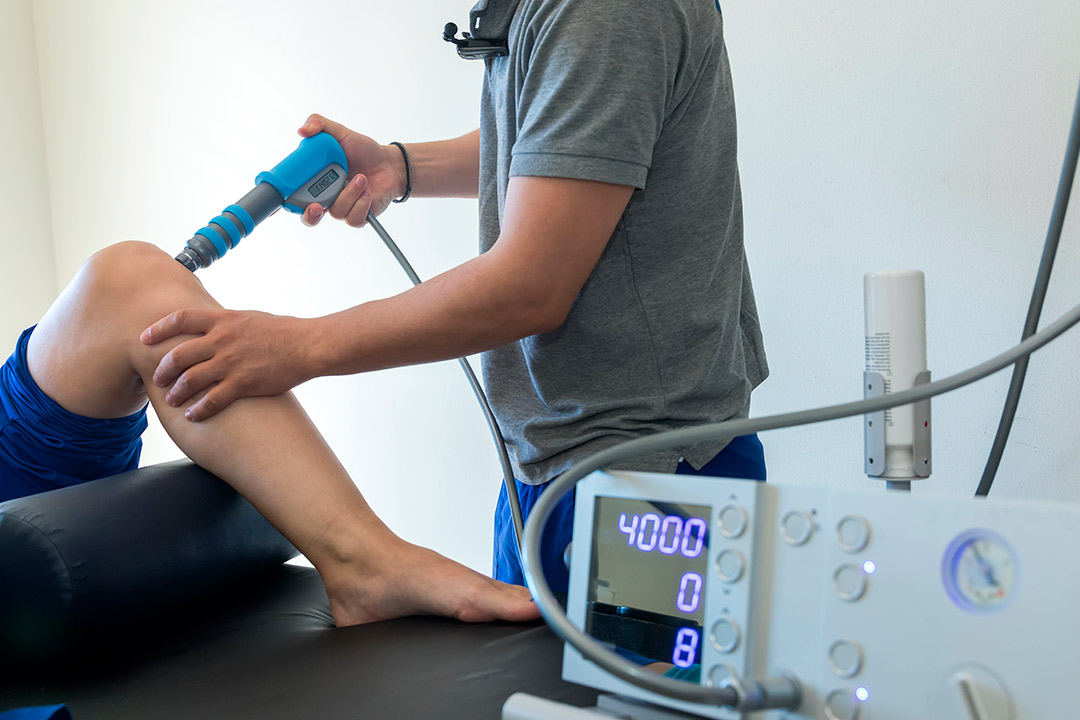
Choosing the right ESWT device depends on your practice needs, patient volume, and financial capacity. Portable devices are cost-effective and mobile but lack the power and precision of clinical units, which are better suited for high-volume clinics treating complex conditions.
Quick Decision Guide
✅ Choose a Portable Device If You:
- Need mobility for home visits or multiple locations.
- Have limited space in your clinic.
- Treat only superficial conditions.
- Are on a tight budget and need a lower-cost solution.
✅ Choose a Clinical Device If You:
- Have a high patient volume and a dedicated clinic space.
- Needs deep tissue penetration and adjustable settings.
- Want a long-term investment with greater treatment versatility.
- Can afford a higher upfront cost for better ROI.
Ready to Invest in an ESWT Device?
At Shockwave Source, we provide expert insights and comparisons to help healthcare professionals choose the right ESWT device. Whether you need a portable solution for mobility or a clinical powerhouse for advanced treatments, we’ve got you covered.
Explore Shockwave Source for detailed guides, product reviews, and buying or leasing options for our top-rated ESWT machines. Today, you can transform your practice.



